For my birthday this year, Kim decided to take me on a trip to Robben Island just off the coast of Cape Town. The island is about 7 kilometres from the waterfront. We took a ferry to the island which gave us wonderful views of the city and Table Mountain. The tour of the island given by an actual prisoner was humbling and enlightening.
I was fortunate to have seen the movie Goodbye Bafana (aka The Colour of Freedom) in advance of my visit. The movie tells the true story of Mandela’s life on the island and his relationship with his censor. The censor was responsible for controlling the information which prisoners could receive and transmit to the outside world. Having been filmed on the island, I found I was able to better visualize the prison as it was. Those interested in Mandela’s story should certainly see this movie.
Some information about the island:
The entire six square kilometer island is now a UN World Heritage Site. A forlorn yet tranquil atmosphere permeates the place. One can almost hear audible sighs of relief from the island, once a haven for seals and ocean birds before sailing ships rounded the Cape. Sailors relentlessly plundered it for fresh seal meat and penguin eggs. Eventually it became a dumping ground for exiles and criminals. In the 17th century the Dutch were the first to banish their political troublemakers and Muslim leaders from the East Indies. Today there’s a beautiful shrine, called a kramat, built in honor of Tuan Guru. After his release this Muslim holy man went on to found Islam among Cape Town’s slaves.
Xhosa chiefs who rebelled against British rule were shipped to the island from the Eastern Cape. From the mid 1800’s criminals, prostitutes, outcasts, lepers and the mentally ill joined them. All were subjected too much cruelty and abuse.
In 1961 the Prisons Department took over and built an austere maximum-security prison. It was here that Nelson Mandela was sent after receiving a life imprisonment sentence in 1963. Political and common-law prisoners were initially lodged together. Contact with the outside world was limited to receiving and sending two letters a year. In 1971 the political prisoners were further isolated. Beatings, hard physical labour in the lime quarry, prolonged solitary confinement and insufficient food, bedding and clothing were endured for many years. Hunger strikes, legal action and international pressure eventually brought better conditions. The prison even became an informal university behind bars, with prisoners tutoring their warders. 1991 saw the release of the remaining political detainees and in 1996 the common-law prisoners were transferred to the mainland.
Source
-
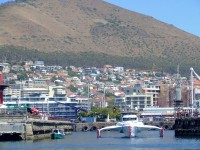
-
Leaving the city and harbour behind as we head to the island
-
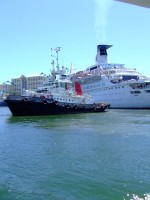
-

-
Cruise ships are regularily stationed at Cape Town
-
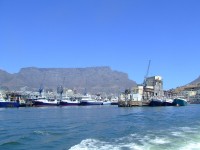
-

-
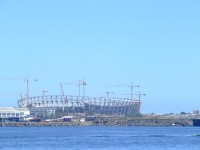
-
Cape Town stadium being built for the upcoming 2010 Soccer World Cup
-

-
Viewing the entire span of the mountain
-
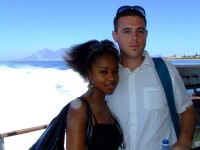
-
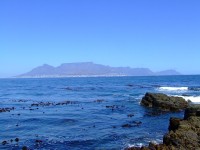
-
View from the island
-
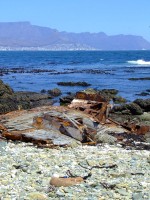
-
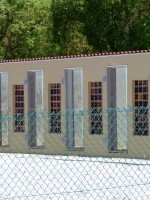
-
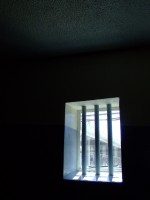
-
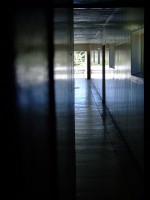
-
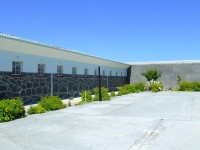
-
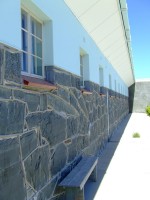
-
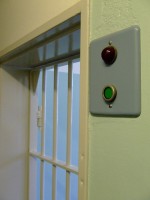
-
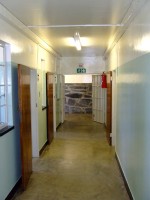
-
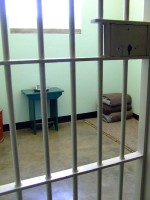
-
The cell where Mandela spent a great deal of his time while in prison
-
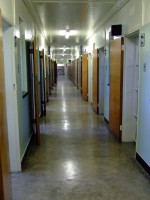
-
Former cells
-
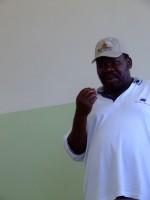
-
Our guide for the day and a former prisoner on the island
-
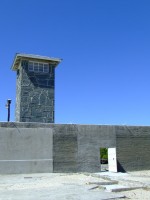
-
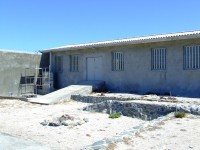
-

-
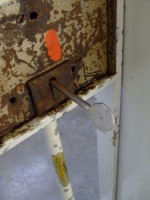
-
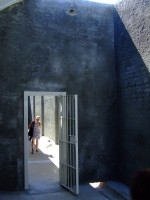
-
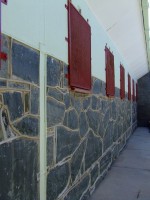
-
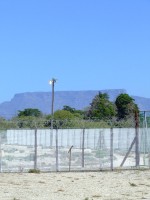
-
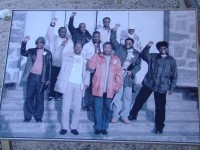
-
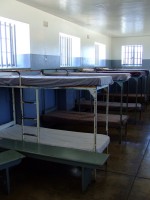
-
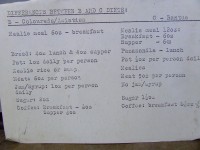
-
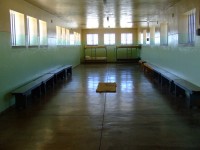
-
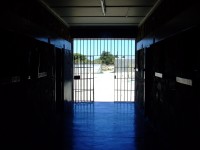
-
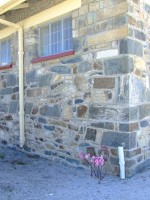
-
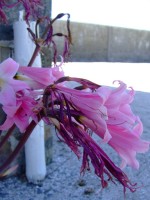
-

-

-
The Kramat
-
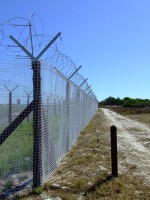
-

-
Remnants of WWII when the island was used as a military defence post
-
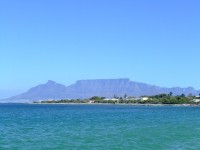
-

Like this:
Like Loading...
Michael Paskevicius
Share post:
For my birthday this year, Kim decided to take me on a trip to Robben Island just off the coast of Cape Town. The island is about 7 kilometres from the waterfront. We took a ferry to the island which gave us wonderful views of the city and Table Mountain. The tour of the island given by an actual prisoner was humbling and enlightening.
I was fortunate to have seen the movie Goodbye Bafana (aka The Colour of Freedom) in advance of my visit. The movie tells the true story of Mandela’s life on the island and his relationship with his censor. The censor was responsible for controlling the information which prisoners could receive and transmit to the outside world. Having been filmed on the island, I found I was able to better visualize the prison as it was. Those interested in Mandela’s story should certainly see this movie.
Some information about the island:
The entire six square kilometer island is now a UN World Heritage Site. A forlorn yet tranquil atmosphere permeates the place. One can almost hear audible sighs of relief from the island, once a haven for seals and ocean birds before sailing ships rounded the Cape. Sailors relentlessly plundered it for fresh seal meat and penguin eggs. Eventually it became a dumping ground for exiles and criminals. In the 17th century the Dutch were the first to banish their political troublemakers and Muslim leaders from the East Indies. Today there’s a beautiful shrine, called a kramat, built in honor of Tuan Guru. After his release this Muslim holy man went on to found Islam among Cape Town’s slaves.
Xhosa chiefs who rebelled against British rule were shipped to the island from the Eastern Cape. From the mid 1800’s criminals, prostitutes, outcasts, lepers and the mentally ill joined them. All were subjected too much cruelty and abuse.
In 1961 the Prisons Department took over and built an austere maximum-security prison. It was here that Nelson Mandela was sent after receiving a life imprisonment sentence in 1963. Political and common-law prisoners were initially lodged together. Contact with the outside world was limited to receiving and sending two letters a year. In 1971 the political prisoners were further isolated. Beatings, hard physical labour in the lime quarry, prolonged solitary confinement and insufficient food, bedding and clothing were endured for many years. Hunger strikes, legal action and international pressure eventually brought better conditions. The prison even became an informal university behind bars, with prisoners tutoring their warders. 1991 saw the release of the remaining political detainees and in 1996 the common-law prisoners were transferred to the mainland.
Source
Share this:
Like this:
Final Days in Cape Town
Settling back into the Cape Town lifestyle following our road trip was a cinch for me. The final week of the trip was to be spent hanging around the city,. read more…
Share this:
Like this:
Continue Reading
South Africa Road Trip
Following the research workshops and conference, I was ready to switch into vacation mode and start further exploring around the Western Cape. I feel very fortunate that I was. read more…
Share this:
Like this:
Continue Reading
Return to Cape Town: First Few Days
I feel so fortunate to have had a chance to return to Cape Town in March, nearly five years to the date I left. I always knew that I would. read more…
Share this:
Like this:
Continue Reading
Best of the Best Cape Town
I have left Cape Town after three beautiful years! I did not travel extensively in South Africa, as I did in Namibia, this is mostly because Cape Town has so much to. read more…
Share this:
Like this:
Continue Reading